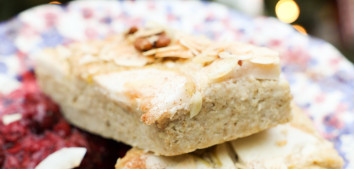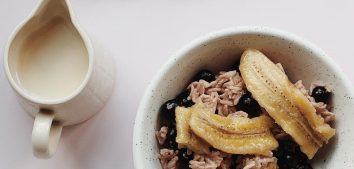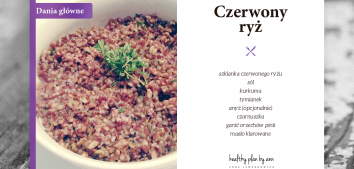
Low Glycemic Diet
The term glycemic index may sound familiar to you as I’ve already mentioned it in my posts. Today I’ll try to explain what it means in practice. GI is an indicator that is used in relation to food products. It tells us how a portion of a product that contains 50g of carbohydrates will increase our blood sugar level (about 120 minutes after consumption) compared to the consumption of the same amount of glucose. You will most come across this indicator in relation to the diet used in people with diabetes, cancer, polycystic ovary syndrome or gestational diabetes.
How do I control my blood glucose levels?
When was the last time you tested your blood glucose? Prevention is the key, and elevated sugar levels are simply dangerous. Diabetes has become so ubiquitous that doctors are surprised when a patient after the age of 60 on an appointment, to the standard question: “Do you have diabetes?”, He replies decisively: “No”. Early detection of carbohydrate disorders, thanks to the introduction of measures such as the use of a low GI diet and physical activity, will allow you to protect yourself against the disease and its complications.
Diabetes has become so ubiquitous that doctors are surprised when a patient over the age of 60 replies “No” when asked “Do you have diabetes?” Early detection of carbohydrate disorders, thanks to the introduction of measures such as the use of a low GI diet and physical activity, will allow you to protect yourself against the disease and its complications. You can measure your blood glucose using blood glucose meters available in pharmacies and in a medical laboratory.
Glycemic Index Values!
You all know that white sugar, light flour, any sweetening syrups (glucose, fructose, glucose-fructose or corn) are food ingredients that you should avoid. They are characterized by a high GI which causes the sugar level in your body to soar and drop just as quickly, causing drowsiness and an increased appetite, mainly for sweets.
There are many high GI foods but should we ban them all? GI is just one component used to judge whether a product is of value. In addition to carbohydrates, we also look for proteins, healthy fats, vitamins, minerals and fiber in food. All of them are worth considering because they matter when we create meals in a low GI diet.
Below you will find the ranges of GI values and sample products:
- low GI – <55: milk, yoghurt, eggs, meat, fish, raw carrots, broccoli, lettuce, spinach, peppers, zucchini, nuts, strawberries, raspberries, apple, avocado, wholemeal sourdough rye bread, al dente wholemeal pasta, chickpeas, beans, xylitol
- medium GI – 55-70: apricots, pineapple, wheat noodles, boiled beets, steamed potatoes, sweet potatoes,
- high GI – 70-100: cane sugar, high-sugar jam, white rice, rice drink, baked potatoes, tapioca, baguette, millet, corn flakes.
What influences GI?
Factors influencing the GI value of a product and a meal are:
- degree of product processing – subjecting the product to culinary treatment changes its GI, e.g. raw beets will have a low GI, while cooked medium GI, and the same mashed beetroot will have a high GI,
- the form of the product – eating fruit, vegetables or starch products with the fiber contained in them, as well as in larger pieces, will maintain a lower GI of the product, e.g. a whole, peeled orange will have a lower GI than a filleted orange or juice, similarly to fresh raspberries in relation to raspberry mousse, or cooked pearl barley in comparison to fine barley,
- soluble fiber content – the higher it is, the lower the GI of vegetables, fruits, cereals, legumes,
- fruit ripening degree – a greenish banana will have a lower GI than a ripe yellow fruit,
- the addition of protein and fat – reduces the GI of the whole meal, e.g. spaghetti al dente with tomato sauce, pumpkin and corn will have a higher GI than spaghetti al dente with tomato sauce, chicken, zucchini and parmesan,
- the degree of cooking – al dente pasta will have a lower GI than overcooked pasta,
- sweetening – adding sugar or honey to dishes increases the GI of a meal, e.g. natural yogurt with raspberries will have a lower GI than raspberry yogurt with added sugar,
- storing previously cooked starchy products such as potatoes, rice, and groats at a low temperature in the fridge causes the production of the so-called resistant starch, which reduces GI. Therefore, cooking potatoes or groats the day before with a meal planned for the next day not only saves time, but also reduces the GI of the meal.

What is the glycemic load (GL)?
It is an indicator that takes into account the quantity and quality of carbohydrates in food products. It is calculated by multiplying the GI by the amount of carbohydrate it contains. The result is divided by 100. The higher the GL of a product, the greater the increase in blood glucose after its consumption.
Below you will find the ranges of the GL values:
- low GL products – 0-10
- medium GL products– 10-20
- high GL products – > 20
Why can high GI be dangerous?
Consuming products with a high GI may lead to increased appetite, and thus, eating too much kilocalories and gaining weight. It is especially dangerous to base your daily diet on products that contain significant amounts of simple sugars, and at the same time lack fiber. I mean all sweetened drinks, sweets, white flour products. A diet with a high GI can cause concentration disorders and fat deposition, lead to glucose intolerance, diabetes, and even elevated triglycerides and cardiovascular disease. A high GI diet is considered to be one of the factors predisposing to insulin resistance and obesity. The DECODE study associated impaired glucose tolerance with increased mortality from cardiovascular disease. Other experts, such as Livesey and members of the International Carbohydrate Quality Consortium, conducted a meta-analysis of studies on the relationship between GI and GL and the risk of developing type 2 diabetes. They found that GI was strongly associated with the onset of type 2 diabetes and that the risk of the disease increased by almost 90%, comparing the lowest and highest GI value of the studied diets in the world, i.e. GI in the diet of 48 compared to 76. Importantly, the increase in the risk of developing diabetes in this case is much greater than the risk associated with consuming too little fiber. High GI diets have also been associated in some studies with an increased risk of certain cancers. In a meta-analysis of 88 studies by Turati and colleagues, high GI diets were associated with an increased risk for colorectal cancer and bladder cancer.
Can a high GI be beneficial?
There are situations where certain high GI foods will be recommended. Immediately after intense training, when we use up all our carbohydrates stored in the form of glycogen in the muscles, it is worth consuming a small portion of fruit smoothie, fresh juice, fruit salad or a healthy bar. You will find a lot of inspiration for healthy post-workout snacks HERE as well as in the app available HERE. This allows you to replenish the energy and helps you achieve better results during your next intense effort.

Can a low GI promote weight loss?
A low GI diet keeps insulin levels in the blood constantly low. As a result, it can promote weight loss, reduce inflammation and reduce the risk of developing civilization diseases. At the same time, the use of a low GI diet reduces the risk of the urge to snack. A low GI diet is a good choice especially for people who are overweight, obese, have metabolic syndrome, impaired glucose tolerance, insulin resistance, hypothyroidism, or polycystic ovary syndrome.
Planning a low GI diet
When creating a low GI diet menu, you should be guided by both GI and GL as well as the aforementioned factors that affect the GI of the entire meal. So, in a low GI diet, small amounts of medium and high GI foods can appear when combined with foods rich in fiber, protein and healthy fats. We pay attention to the source and form of starch and the cooking time of starch products. Overcooking them causes the starch to be digested and absorbed faster, which increases the GI of the meal. The number of meals is also important. Frequent and regular meals will keep your blood glucose levels constant and insulin levels low in your body. Dividing the all-day menu into 5 meals will bring better results in this respect. Of course, there are many nutritional models, such as the IF (Intermittent Fasting) diet and others, but in the context of GI, the principle that works best is: frequent and smaller portions. If you find it difficult to compose a low GI diet, you can take advantage of the low GI diet available both in the app HERE.
Interesting facts!
Food manufacturers are careful and aware of the benefits of a low GI diet. The trend for healthy eating prompted the search for methods to lower the GI of meals. What have food producers decided to do? They change white sugar to fructose, xylitol, and sweeteners, they add soluble fiber or increase the proportion of fat in the product. Interestingly, research studies have shown that the addition of purified fig extract inhibited the glycemic and insulin response to a classic meal. The active ingredient in said extract is abscisic acid, which occurs naturally in figs and other plants. Who knows, maybe we’ll see it soon in the stores!
To sum up, a low GI diet brings many health benefits and can be recommended as a prevention of civilization diseases as well as support for sick people during treatment. A high GI diet is a risk factor for the development of excess weight, obesity, diabetes and cancer. Composing a diet with a low GI is based on the GI and GL values as well as the knowledge of the factors influencing the values of these indicators. Remember that eating a healthy snack with a high GI after training will be beneficial due to post-workout regeneration and not all products with a medium and high GI are contraindicated. As in everything, I recommend a healthy BALANCED approach!
Bibliography:
- Atkinson F, Foster-Powell K, Brand-Miller J. International Tables of Glycemic Index and Glycemic Load Values: 2008. Diabetes Care. 2008; 31(12): 2281–2283.
- Atkinson SF, Villar A, Mulà A, et al. Abscisic Acid Standardized Fig (Ficus carica) Extracts Ameliorate Postprandial Glycemic and Insulinemic Responses in Healthy Adults. Nutrients. 2019;11:1757.
- Livesey G, Taylor R, Livesey FH, et al. Dietary Glycemic Index and Load and the Risk of Type 2 Diabetes: A Systematic Review and Updated Meta-Analyses of Prospective Cohort Studies. Nutrients. 2019;11:1280.
- The DECODE study group on behalf of the Europe an Diabetes Epidemiology Group. Glucose tolerance and mortality: Comparison of WHO and American Diabetes Association diagnostic criteria. Lancet. 1999;354:617–621.
- Turati F, Galeone C, Augustin SAL, La Vecchia C. Glycemic Index, Glycemic Load and Cancer Risk: An Updated Meta-Analysis. Nutrients. 2019;11:2342. doi: 10.3390/nu11102342.










Comments No Comments
Join the discussion…